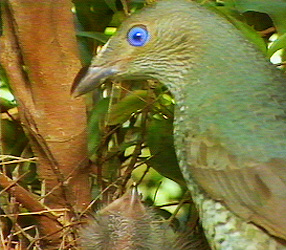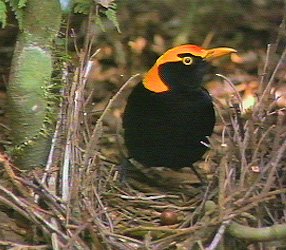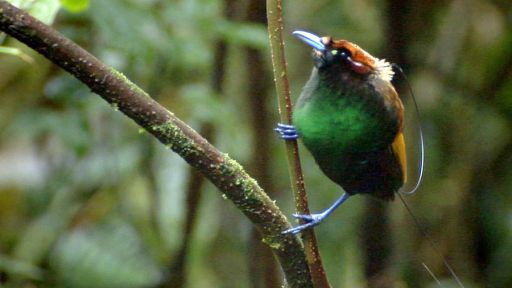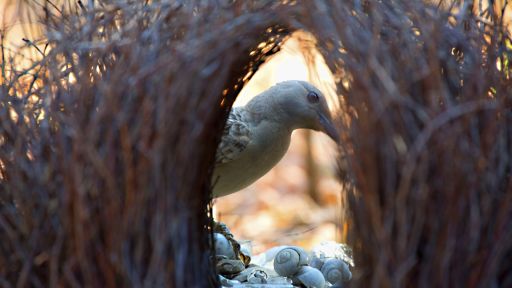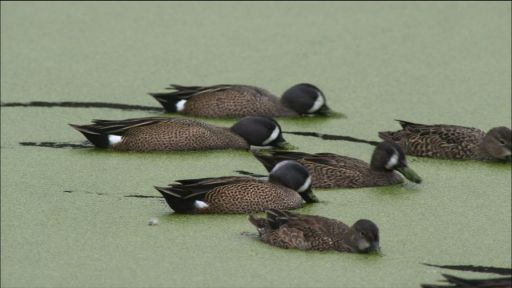Using high-tech tools, from video cameras to robots, researchers are gaining some new insights into the world of the bower bird, a world long hidden from prying eyes by the bird’s dense tropical forest home.
One practical problem that any would-be researcher faces, explains Gerald Borgia, an expert on bower birds at the University of Maryland, is that “it’s hard to find bowers.” Since 1980, however, Borgia and his students have been developing clever techniques for finding and observing courting birds in a square mile of rainforest near Wallaby Creek in northeastern Australia. To find Satin bower bird bowers, for instance, Borgia stages intense searches. “We get a bunch of volunteers, form lines maybe six abreast, and walk the site,” he explains. But finding a bower doesn’t ensure a study’s success, because an observer might watch it for hours before seeing any courting activity. So automatic cameras are left to keep watch on the bowers instead. Early on, Borgia used 8-millimeter film cameras; today, videocameras equipped with hair-trigger laser sensors start recording the action whenever a bird approaches the bower.
In a recent study, cameras trained on 36 bowers allowed Albert Uy, one of Borgia’s graduate students, to study the practice of “mate shopping.” The question, Borgia explains, was “How many bowers did a female visit before choosing a mate?” Surprisingly, preliminary results suggest that only 25 percent of the monitored females shopped around; the rest went right to a single bower. As the scientists analyze the more than 2,300 hours of videotape they have accumulated, more answers are likely to emerge. The mate-shopping pattern seen so far could reflect the fact that bower birds are relatively long-lived (Borgia has tracked one female for 17 years), meaning they remember the “best” males from previous years. Longevity may also explain another pattern: males tend to build bowers in about the same places year after year.
Bower birds can be hard to study. If nothing else, Borgia says, the predictability makes it easier for the researchers to relocate the bowers.
Another of Borgia’s graduate students, Gail Patricelli, is using robotic bower birds to study how courting bower birds communicate. “The problem,” Borgia explains, “is that you don’t know which part of the male’s display is being stimulated by the female’s behavior, and which is intrinsic to males. Gail wants to find out what kind of cues the females are sending out.”
To do that, engineers at the University of Maryland built three robot bower birds for Patricelli that are able to perform simple movements such as ruffling their feathers, opening their wings, turning their necks and crouching. In October, Patricelli began placing the robots in bowers, operating them by remote control, then videotaping how the males respond. Borgia reports that the robots are so lifelike that males attempted to mate with them. Final conclusions, however, will have to wait for the scientists to finish analyzing the tapes, which could take years. In the meantime, bower birds and Australia’s other unique animals will continue to fascinate scientists — and confound casual observers unused to the island continent’s unique twist on life.

